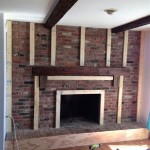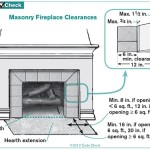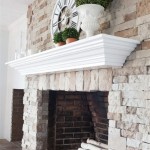Log Holder For Fireplace: Functionality, Aesthetics, and Selection
A log holder for a fireplace is a fixture designed to store firewood in a convenient and organized manner. Beyond its primary function of holding logs, it often serves as a decorative element, contributing to the overall aesthetic of the fireplace area. Log holders come in a variety of materials, styles, and sizes, catering to diverse needs and preferences. Understanding the benefits, types, and selection criteria of log holders is essential for fireplace owners seeking to enhance both the practicality and visual appeal of their hearth.
Benefits of Using a Log Holder
The implementation of a log holder offers several advantages that extend beyond mere storage. These benefits encompass organization, tidiness, safety, convenience, and the preservation of firewood quality.
One of the foremost benefits is enhanced organization. A log holder provides a designated space for firewood, preventing it from being scattered around the room. This contributes to a neater and more organized living area, reducing clutter and creating a visually appealing and less chaotic environment. By containing the firewood, the log holder promotes a sense of order and control over the fireplace area.
Related to organization, a log holder directly improves the tidiness of the fireplace area. Without a designated storage solution, firewood can leave behind debris such as bark, wood chips, and dust. A log holder helps contain these particles, minimizing the mess and simplifying cleanup. This is particularly beneficial for individuals who prioritize a clean and well-maintained living space. Regular sweeping or vacuuming around the log holder can further maintain cleanliness.
Safety is another crucial advantage. Stacking firewood improperly can create hazards, such as unstable piles that may collapse. A log holder provides a stable and secure structure for storing firewood, reducing the risk of accidents and injuries. This is especially important in households with children or pets, where unattended firewood piles can pose a safety risk. Choosing a log holder with a sturdy base and robust construction is paramount for ensuring safety.
Convenience is significantly improved with a log holder. By keeping firewood readily accessible near the fireplace, the need to repeatedly transport logs from an outdoor storage area is eliminated. This reduces the effort and time required to maintain a fire, making the process more convenient and enjoyable. A well-placed log holder ensures that fuel is always within easy reach, especially during colder months when frequent fireplace use is common.
Finally, a log holder contributes to the preservation of firewood quality. By elevating the wood off the ground, the holder promotes air circulation, which helps to prevent moisture buildup and rot. This ensures that the firewood remains dry and burns more efficiently. Dry firewood produces more heat and less smoke, resulting in a safer and more enjoyable fire. Properly stored firewood within a log holder is less susceptible to mold and pests, further enhancing its longevity and usability.
Types of Log Holders
The market offers a wide variety of log holder types, each with its own unique design, material composition, and functionality. These variations allow consumers to select a log holder that perfectly matches their aesthetic preferences and practical needs.
One common type is the traditional log rack. Typically made from metal, such as steel or wrought iron, these racks provide a simple and effective way to store firewood. They often feature a raised base to keep the wood off the ground and promote air circulation. Traditional log racks are available in various sizes and styles, from basic rectangular designs to more decorative options with ornate details. Their durability and straightforward functionality make them a popular choice for many households.
Another type is the log carrier with stand. This combines the functionality of a log carrier, used to transport firewood, with a stand that serves as a log holder. The carrier is typically made of canvas or leather and features sturdy handles for easy carrying. The stand provides a stable base for the loaded carrier, keeping the firewood organized and accessible. This type of log holder is particularly convenient for those who need to transport firewood from an outdoor storage area to the fireplace.
Fireplace log holders are designed specifically to sit within or directly adjacent to the fireplace. These holders often feature a more compact design to fit within the limited space. They may be made from metal or ceramic and can be purely functional or incorporate decorative elements. Some fireplace log holders are designed to complement the existing fireplace design, enhancing the overall aesthetic of the hearth.
Decorative log holders prioritize aesthetics over pure functionality. These holders often feature unique and artistic designs, serving as a statement piece in the room. They may be made from a variety of materials, including wood, metal, and glass, and can incorporate intricate patterns or sculptural elements. Decorative log holders are ideal for individuals who want to add a touch of personality and style to their fireplace area.
Finally, outdoor log holders are designed to withstand the elements and provide long-term firewood storage. These holders are typically made from weather-resistant materials, such as galvanized steel or powder-coated metal. They often feature a cover to protect the firewood from rain and snow. Outdoor log holders are essential for those who store their firewood outside and want to ensure that it remains dry and usable throughout the year.
Factors to Consider When Selecting a Log Holder
Choosing the right log holder involves considering several factors, including size, material, style, capacity, placement, and budget. Evaluating these aspects ensures that the selected log holder meets the specific needs and preferences of the user.
Size is a crucial consideration. The size of the log holder should be appropriate for the size of the fireplace and the amount of firewood typically used. A log holder that is too small may require frequent refilling, while one that is too large may take up excessive space and appear disproportionate. Measuring the available space and estimating the amount of firewood needed are essential steps in determining the appropriate size.
The material of the log holder is another important factor. Different materials offer varying levels of durability, aesthetics, and maintenance requirements. Metal log holders, such as those made from steel or wrought iron, are known for their durability and strength. Wood log holders offer a more rustic and natural aesthetic. Other materials, such as ceramic or glass, may be used for decorative log holders. The choice of material should align with the overall style of the room and the user's preferences regarding maintenance.
Style is a significant consideration for those who prioritize aesthetics. Log holders are available in a wide range of styles, from traditional and rustic to modern and contemporary. The style of the log holder should complement the existing décor of the room and reflect the user's personal taste. Considering the color, shape, and design details of the log holder is essential for achieving a cohesive and visually appealing look.
Capacity refers to the amount of firewood that the log holder can hold. The required capacity depends on the frequency of fireplace use and the availability of firewood. Individuals who use their fireplace frequently may need a log holder with a larger capacity to minimize the need for refilling. Considering the average amount of firewood consumed per day or week can help determine the appropriate capacity.
Placement is another important factor. The log holder should be placed in a location that is both convenient and safe. It should be easily accessible from the fireplace but should not obstruct walkways or create a tripping hazard. Placing the log holder near the fireplace can make it more convenient to add logs to the fire. However, it should be kept a safe distance from the flames to prevent any potential fire hazards.
Finally, budget is a practical consideration. Log holders are available at a wide range of price points, depending on the size, material, style, and brand. Setting a budget beforehand can help narrow down the options and ensure that the selected log holder is within the user's financial means. Comparing prices and reading reviews can help identify the best value for the money.
By carefully considering these factors, individuals can select a log holder that meets their specific needs and enhances both the functionality and aesthetics of their fireplace.

Livingandhome Round Iron Log Storage Firewood Rack Fireplace Holder Black 63cm Diy At B Q

Frame Indoor Outdoor Log Holder Reviews Crate Barrel

Industrial Fireplace Log Holder Pottery Barn

Willow Fireplace Log Holder Screen Set West Elm

Fireplace Wood Log Rack Indoor Firewood Holder With Wheel China Outdoor Made In Com

Pleasant Hearth Harper 4 Piece Log Holder And Fireplace Tool Set Fa338lt The Home Depot

Broe Antler Fireplace Log Holder Pottery Barn

Fireplace Log Holder Stand Gardenis Co

Decorative Fireplace Rack Firewood Holder Storage For Indoor Or Outdoor Vertical

10 Of The Best Indoor Firewood Storage Ideas Maria Louise Design








